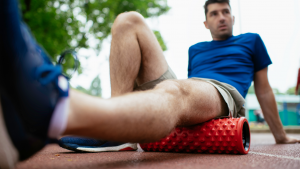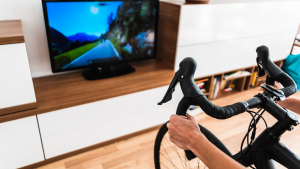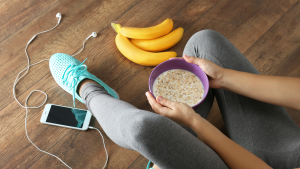No products in the cart.
Cramping
Due to the repetitive nature of our sports, endurance athletes are particularly vulnerable to cramping. Regardless of an athlete’s experience or level of fitness cramping can be an issue. Today we’ll take a look at some of the more common causes and cures for muscle cramping. Causes: There are several causes for muscle cramps, but the most common are exertion cramps. These are due to a combination of dehydration, heat stress and low levels of electrolytes. They begin as spasms and then spread throughout the muscle. As you become increasingly dehydrated over the course of an event or workout the connective tissues can adhere and inhibit muscle contraction or release. Once the cramping begins it spreads from one muscle to another. Less common are muscle fatigue cramps. As your muscles work, they contract and release over and over. Eventually, the muscles can fatigue to the point that they simply lock in a contraction and are unable to release. These cramps are more common amongst novice athletes but they can hit seasoned competitors as well. Usually they occur early in the season when you’re just getting back into training and aren’t yet up to the workload. If this is the case, simply back off the intensity and build a base fitness that you can expand on over the course of the year. Prevention: It’s hard to point to one factor as being responsible for muscle cramps so the best approach is to stay on top of all of the contributing factors. So let’s take a look at what you can do to prevent cramping. Nutrition: Electrolytes and water are essential for muscle contraction as you burn through them during work it becomes increasingly difficult for muscles to fire over and over again unless you continue to replenish both. Heat contributes by increasing fluid loss through perspiration and exhalation. Maintaining a steady intake of fluids/electrolytes while consuming calories goes a long way to prevent cramping. On particularly hot days dumping water on yourself helps lower your core temperature and slows fluid loss. However, if water is limited, it’s always better to drink it. Post Event/Exercise: The importance of fluid intake doesn’t end once your done. After exercise is when you can actually bring your fluid, electrolyte and carbohydrate levels back to where they were before you started. Stretching helps fatigued muscles to relax and restores them to their natural length. Ignoring tight muscles will not only lead to cramping later on but injury. Incorporating a 15min stretch to your post workout routine can do wonders to help you recover. Don’t know where to begin? Take a look at this great routine we created just for you! Massage helps flush the waste that accumulates in muscles and releases tight muscles that can be difficult to address with stretching alone. Both pre and post event massage can have tremendous benefits to athletes of all levels (Trevor Marshall is an AMAZING therapist over at Englebrecht Chiropractic). If all else fails and cramping continues to be a problem a Nutritional Blood Analysis can help determine if you are abnormally low in an essential nutrient. Even if you eat a well balanced diet, take all the right supplements and stay well hydrated, it’s still possible to miss something. After trying everything you can imagine one of our own athletes still had problems with cramping, it wasn’t until he had a blood test that it was revealed he was exceptionally low in a particular nutrient. If you suspect you might be deficient, it is much better to get tested before trying to treat yourself as that can create problems as well if you take too much of a particular vitamin or mineral. What about you? What kind of methods do you use to for cramping? Pickle Juice? Apple Cider Vinegar? Mustard Packs? Tell us about it!




